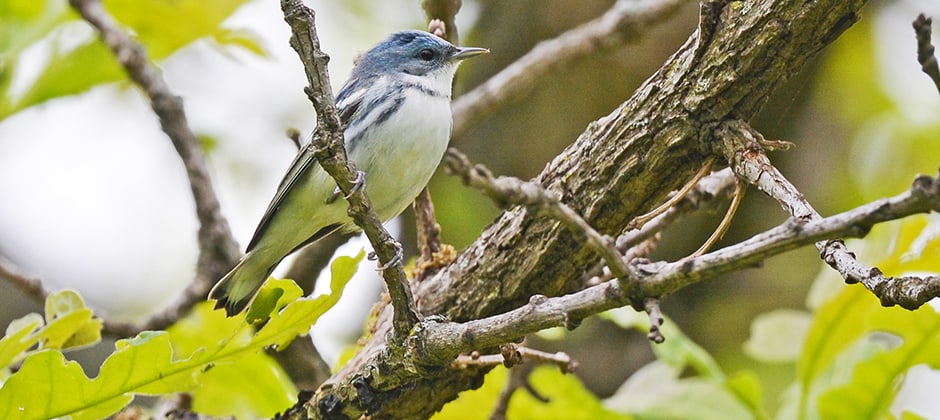Share this article
Shale gas development a mixed bag for songbirds
Shale gas development can benefit some songbird species, but for others, many of which are already threatened, it may be causing further declines.
In a recent study published in The Condor Ornithological Applications, researchers wanted to understand how the shale gas industry, which has seen a boom in the Marcellus shale region between West Virginia and New York since 2005, affects songbird species that use different parts of the forest.
“A lot of this development is occurring in heavily forested areas across the Central Appalachian region, and these forests also have high conservation value,” said Laura Farwell, lead author of the study, who conducted the research as a PhD student at West Virginia University and now works in the Department of Forest and Wildlife Ecology at the University of Wisconsin-Madison. This has caused a conflict, she said, for managers who are tasked with supporting energy development but who also want to conserve wildlife habitat.
“Shale gas development usually occupies a pretty small footprint on the landscape,” Farwell said. “But clearcuts for drilling and pipeline construction are happening in large areas of interior forest. We know this can lead to extensive forest fragmentation, and wanted to assess how far negative edge effects might be extending into surrounding forests.”
The researchers conducted a study over a 10-year period, dating back to when shale gas development began to ramp up. They monitored landcover changes using aerial and satellite imagery, and they also monitored breeding songbirds. They were particularly concerned about forest interior-dependent species like the cerulean warbler (Setophaga cerulean), a species that has experienced dramatic population declines and whose core breeding range overlaps the Marcellus shale basin. The study site was designated as a globally important area for the species.
The team determined if different species were avoiding or attracted to shale gas infrastructure. “We found that some birds definitely avoided shale gas infrastructure while others are attracted to it,” she said.
However, most birds that were avoiding infrastructure were species that depend on forest interior habitat, Farwell said, “many of which are species of conservation concern.”
Some of the species that avoided the areas included ovenbirds (Seiurus aurocapilla) and wood thrush (Hylocichla mustelina). Cerulean warblers, on the other hand, were often attracted to the development, but that may be problematic. Shale gas infrastructure may create open spaces that mimic small canopy openings preferred by these birds, which are forest gap specialists. This may cause an ecological trap, Farwell said, attracting susceptible birds to poor quality habitat.
Cerulean warblers have decreased 35% over the past 10 years at the site compared to a 20% decline across the broader Central Appalachian region.
At the same time, other bird species that prefer forest edges appear to be attracted to the development and are increasing in population size. Early successional species such as the indigo bunting (Passerina cyanea) saw population increases at the site, taking advantage of new pipelines and access roads.
Human-adapted species such as the brown-headed cowbird (Molothrus ater) were also attracted to shale gas infrastructure and increased in numbers across the site. These birds are nest parasites that lay their eggs in other birds’ nests. “Cerulean warblers are known to be vulnerable to nest parasitism,” Farwell said. “This could be a recipe for disaster if there are dramatic increases in brown-headed cowbirds and cerulean warblers are attracted to the same development.”
Farwell hopes the information could help with planning decisions about where to locate shale gas infrastructure, and mitigate its impact on native songbird communities as development continues and new infrastructure projects are permitted. She recommends avoiding development in interior core forest habitat whenever possible, and managing areas that have already been impacted for species that may benefit from fracking development.
“We need to find a way to balance our energy needs with conservation of valuable forest ecosystems,” she said. “I’m suggesting that we make better efforts to locate new development near existing infrastructure, and that we set aside some areas of core forest habitat and exempt those forests from fracking development.”
Header Image: Cerulean warblers have decreased since shale gas development began. ©Andy Reago & Chrissy McClarren








